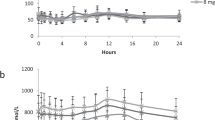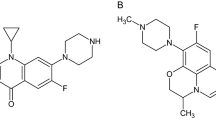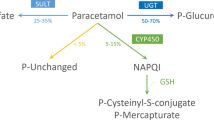Abstract
THE urinary substance referred to as B in a previous communication1 has now been isolated in pure form. It can be shown to be p-phenetidine by its infra-red and ultra-violet spectra, the melting point of a picrate (176–180° C.) and lack of depression of melting point in a mixture with authentic p-phenetidine picrate (179–181° C). It is present in urine as a labile acidic substance which can be precipitated by lead acetate and purified by paper chromatography from butanol–acetic acid (R F about 0.5). The precursor seems to be a conjugate with sulphuric acid. About 2–3 per cent of administered phenacetine is excreted in this form.
This is a preview of subscription content, access via your institution
Access options
Subscribe to this journal
Receive 51 print issues and online access
$199.00 per year
only $3.90 per issue
Buy this article
- Purchase on Springer Link
- Instant access to full article PDF
Prices may be subject to local taxes which are calculated during checkout
Similar content being viewed by others
References
Špaček, M., Nature, 172, 204 (1953).
Author information
Authors and Affiliations
Rights and permissions
About this article
Cite this article
ŠPAČEK, M. Phenetidine in Urine. Nature 174, 933–934 (1954). https://doi.org/10.1038/174933b0
Issue Date:
DOI: https://doi.org/10.1038/174933b0
Comments
By submitting a comment you agree to abide by our Terms and Community Guidelines. If you find something abusive or that does not comply with our terms or guidelines please flag it as inappropriate.



